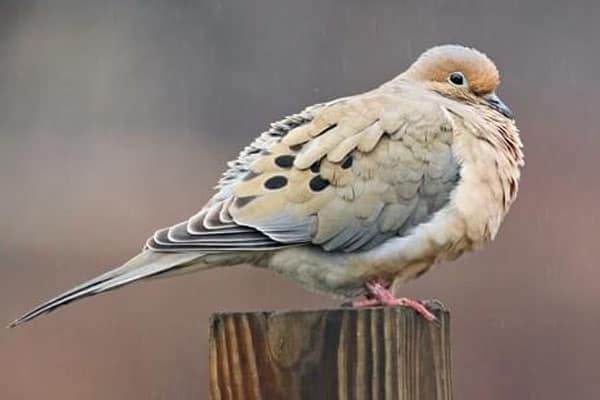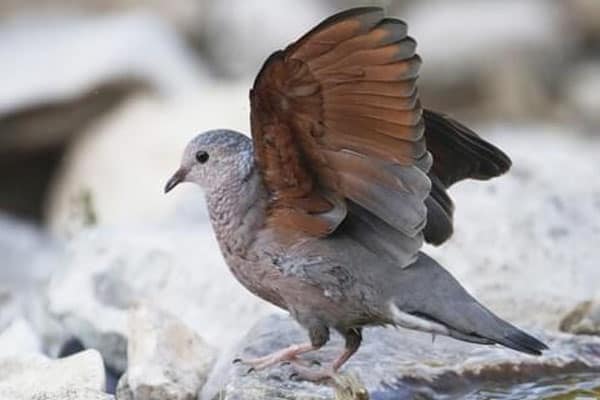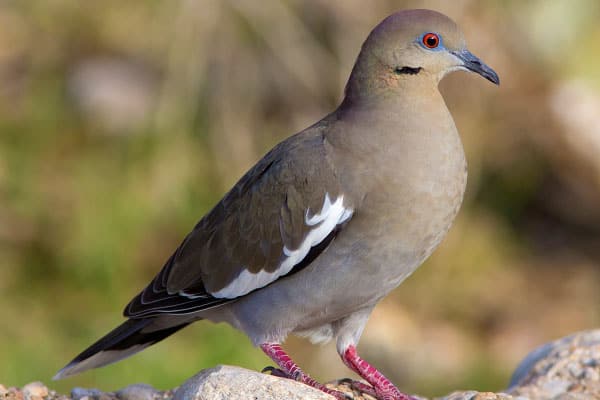Doves in Florida is a haven for a variety of these captivating birds, each with its own unique features and characteristics. In this comprehensive guide, you’ll discover 6 different types of doves found in Florida, complete with stunning photos to help you identify them. Whether you’re a backyard birdwatcher or an avid nature enthusiast, this article will provide you with a deeper appreciation for the diverse and fascinating world of Florida’s dove population.
Are you prepared to uncover the hidden gems of Florida’s dove diversity? Let’s dive in and explore the fascinating realm of doves in Florida, from the familiar mourning dove to the exotic white-winged dove.
Main points:
- Florida is home to a variety of dove species, including the mourning dove, common ground dove, white-winged dove, and more.
- Each dove species has unique identifying features, nesting habits, and calls.
- Doves can be found in various habitats across the state, from backyards to tropical forests.
- The mourning dove is the most common and widespread dove in Florida, while the common ground dove is the smallest.
- The white-winged dove and Eurasian collared-dove are two distinctive species that add to the diversity of Florida’s dove population.
 – The Most Common Backyard Visitor
– The Most Common Backyard Visitor
The mourning dove is the most common and widespread dove species found throughout Florida. These medium-sized birds are easily recognizable by their slender bodies, rounded heads, and long tapered tails. Mourning doves are frequent visitors to backyard feeders and can often be seen perched on power lines or foraging on the ground for seeds.
Identifying Features
Mourning doves are distinguished by their soft, grayish-brown plumage, black spots on their wings, and distinctive long, tapered tails. Their slender bodies and rounded heads give them a graceful, delicate appearance that is often associated with mourning, hence their name.
Nesting Habits
These doves build simple nests made of twigs and sticks, often in the branches of trees or on ledges of buildings. Mourning doves typically lay up to two eggs at a time, which both parents take turns incubating. The young doves, known as “squabs,” hatch after about 14 days and are cared for by both parents until they fledge and become independent.
Calls and Sounds
The mourning dove’s distinctive cooing call, often described as a “mournful” sound, is a familiar sound in many Florida neighborhoods. These birds are known for their repeated, soft “coo-OO-oo-oo” vocalizations, which can be heard throughout the day as they communicate with one another.
1. Common Ground Dove
Among the diverse array of doves found in the Sunshine State, the common ground dove stands out as the smallest. Measuring just 6-8 inches in length, these diminutive birds can be easily identified by their reddish-brown plumage, rounded heads, and short, stout bills. The common ground dove is a true delight for birdwatchers and nature enthusiasts alike.

How to Spot the Smallest Dove in Florida
If you’re on the lookout for the common ground dove, keep your eyes peeled for these small, ground-dwelling birds as they forage or perch on low vegetation. Their compact size and distinctive coloration make them stand out from the larger mourning doves and white-winged doves commonly found throughout the state.
Behavior and Habitat
The common ground dove is known for its unique behavior, often found foraging on the ground or perched on low-lying plants and shrubs. Unlike their larger counterparts, these small doves have a distinctive bobbing motion when they walk, and their soft, “coo-ooo” call is a gentle addition to the soundscapes of Florida’s open, grassy areas and urban environments.
Whether you’re a seasoned birdwatcher or simply enjoy the beauty of nature, keep an eye out for the common ground dove, the smallest dove species in the Sunshine State.
2. White-winged Dove

The white-winged dove is a stunning addition to Florida’s dove population. These birds are easily recognized by their large white wing patches, which are visible in flight. White-winged doves have grayish-brown bodies, dark heads, and bright red eyes, creating a striking appearance. They are commonly found in urban and suburban areas, often visiting backyard feeders or perching on power lines. These doves are known for their distinct, three-syllable “cooOOoo-oo” call, which can be heard throughout the state.
| Characteristic | White-winged Dove | Other Florida Doves |
|---|---|---|
| Plumage | Grayish-brown body, dark head, large white wing patches | Varying shades of brown, gray, and beige with no distinct wing markings |
| Size | 11-13 inches in length | Ranging from 6-12 inches in length, depending on species |
| Call | Distinct, three-syllable “cooOOoo-oo” call | Various cooing, purring, and whistling sounds |
| Habitat | Commonly found in urban and suburban areas | Adapted to a variety of habitats, including forests, woodlands, and urban environments |
3. Eurasian Collared-Dove
The Eurasian collared-dove is an invasive species that has established a strong presence in Florida over the past few decades. These large, stocky doves are easily recognized by the distinctive black collar around their necks and their light gray plumage. Collared-doves are known for their rapid spread and their ability to outcompete native dove species, such as the mourning dove and common ground dove, for resources.
Recognizing the Collared-Dove
The Eurasian collared-dove is a sizeable bird, measuring up to 13 inches in length, with a wingspan of around 20 inches. Their overall light gray coloration, contrasted by the black collar around the back of the neck, makes them easy to distinguish from other types of doves found in Florida. These invasive species are often seen perching on power lines or foraging on the ground for seeds and grains.
Impact on Native Species
The influx of Eurasian collared-doves in Florida has raised concerns among wildlife biologists and conservationists. These invasive birds have been known to displace native dove species, such as the mourning dove and common ground dove, by outcompeting them for food, nesting sites, and other resources. As the Eurasian collared-dove population continues to grow, they may have a significant impact on the overall diversity and ecological balance of Florida’s native dove populations.
Check Our Previous Posts:
4. White-crowned Pigeon
Amidst the diverse array of doves found in Florida, the white-crowned pigeon stands out as a truly magnificent species. These large, distinctive birds are easily recognizable by their striking white crowns, grayish-blue plumage, and captivating red eyes. The white-crowned pigeon is primarily found in the Florida Keys and the southernmost regions of the state, where they thrive in the lush tropical hardwood hammocks and mangrove forests.
Physical Characteristics
The white-crowned pigeon is a larger member of the dove family, boasting a more robust and majestic appearance compared to its smaller counterparts. Their grayish-blue feathers create a sleek, elegant silhouette, while the stark contrast of the pure white crown atop their heads is truly eye-catching. The red eyes of the white-crowned pigeon add an air of regal sophistication to their overall appearance, making them a truly beautiful sight to behold.
Nesting and Breeding
The white-crowned pigeon is known for its elaborate courtship rituals and its preference for nesting high up in the canopy of tall trees. These doves typically lay a single egg at a time, which they incubate and care for with great devotion. Their nests, constructed from twigs and other natural materials, are often found in the lush, tropical forests and mangrove habitats of the Florida Keys and southern Florida. The presence of these majestic birds is a true testament to the ecological richness and diversity that can be found in the Sunshine State.


Add comment